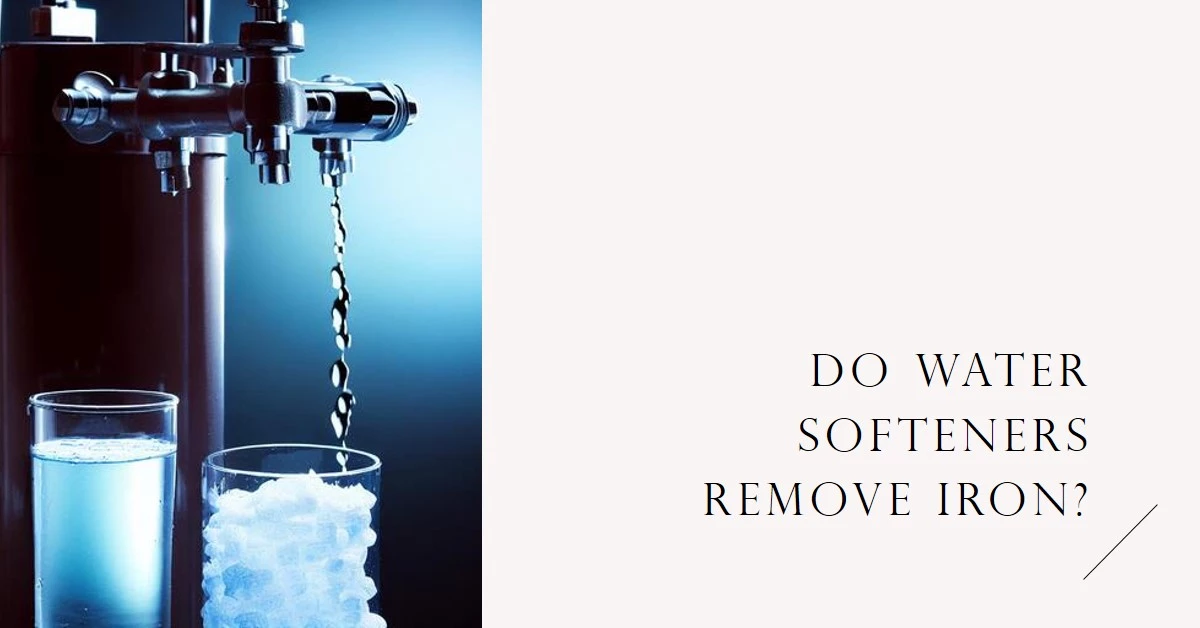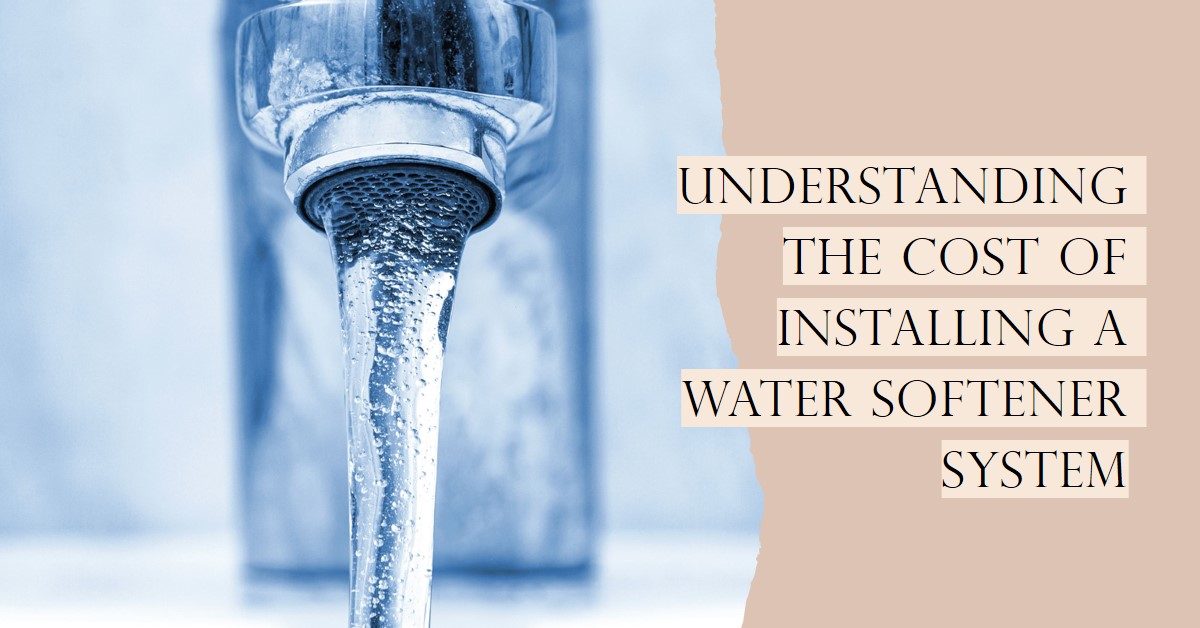In this article, we will discuss the effectiveness of water softeners in removing iron from water and provide a comprehensive understanding of the subject. Addressing concerns about water quality, we will explore the types of water softeners, their efficiency in iron removal, and alternatives for iron removal.
Understanding Iron in Water
Iron is a common element found in water, and understanding its various forms is essential when addressing water quality concerns.
- Types of iron found in water
- Ferrous iron: This soluble form of iron is invisible in water and can only be removed through oxidation.
- Ferric iron: Also known as red water iron, this insoluble form of iron causes red or brown stains on fixtures and laundry.
- Bacterial iron: This type of iron is caused by iron-reducing bacteria, which create slimy, rusty deposits in the water.
- Negative effects of iron in water
- Stains on fixtures, appliances, and laundry
- Unpleasant taste and odor in water
- Potential health concerns for certain populations
- Health concerns related to iron consumption
- While iron is an essential nutrient, excessive levels may pose risks for individuals with certain health conditions, such as hemochromatosis.
Water Softeners: How They Work
Water softeners primarily target hard water minerals, but they can also contribute to iron removal under specific conditions.
- Ion exchange process
- Water softeners use a process called ion exchange to remove calcium and magnesium ions, replacing them with sodium or potassium ions.
- This process reduces water hardness, which can help prevent scale buildup in pipes and appliances.
- Components of a water softening system
- Resin bed: Contains small beads that attract and hold hardness minerals.
- Brine tank: Holds salt or potassium pellets used in the ion exchange process.
- Control valve: Regulates the flow of water through the system and initiates regeneration cycles.
- Salt-based vs. salt-free water softeners
- Salt-based systems use sodium or potassium to remove hardness minerals, while salt-free systems use alternative methods, such as template-assisted crystallization or electromagnetic treatment.
- Salt-based systems may be more effective at iron removal, but salt-free systems can be a better choice for those concerned about sodium intake or environmental impact.
Water Softeners and Iron Removal Efficiency
Water softeners have varying levels of effectiveness in iron removal, depending on specific factors.
- Limitations of water softeners in iron removal
- Inefficiency against ferric and bacterial iron
- Reduction in iron removal capacity as resin becomes fouled
- Factors affecting the iron removal process
- Water hardness: High levels of hardness minerals can reduce a softener’s ability to remove iron.
- Iron concentration: Higher concentrations of iron may require additional treatment methods.
- pH levels: Water softeners are most effective at iron removal when the pH is between 6.5 and 8.5.
- Ideal conditions for effective iron removal
- Low iron concentration (less than 5 ppm)
- Balanced pH levels (6.5 to 8.5)
- Regular maintenance to prevent resin fouling
Iron Filters: An Alternative Solution
Iron filters can be a more effective solution for iron removal in certain situations.
- Types of iron filters
- Mechanical filters: Remove insoluble ferric iron through physical filtration.
- Chemical filters: Use oxidation and precipitation reactions to remove iron from water.
- Biological filters: Utilize specific bacteria to oxidize and remove iron.
- Pros and cons of using iron filters
- Effectiveness in iron removal: Iron filters are specifically designed for iron removal and can handle higher concentrations than water softeners.
- Maintenance requirements: Depending on the type of filter, maintenance may be more frequent and complex than water softeners.
- Cost considerations: Initial investment and operating costs may be higher for iron filters compared to water softeners.
Water Softener and Iron Filter Combinations
A combined approach using both water softeners and iron filters can offer the best results for iron removal and overall water quality improvement.
- Benefits of using a combined system
- Enhanced iron removal capabilities: Combining a water softener and an iron filter can target multiple forms of iron, maximizing removal efficiency.
- Greater overall water quality: A combined system can address hardness minerals, iron, and other contaminants for a comprehensive water treatment solution.
- Recommended systems for various iron concentrations and types
- Specific product suggestions: Research and compare products to find the best combination of water softener and iron filter for your specific water conditions.
- Factors to consider when choosing a system: Evaluate water test results, household water usage, and budget constraints when making a decision.
Maintenance and Costs of Water Softening Systems and Iron Filters
Proper maintenance and an understanding of costs associated with water treatment systems are essential for long-term satisfaction.
- Regular maintenance requirements
- Cleaning and replacing filters: Iron filters may require regular cleaning or replacement, depending on the type of filter and the concentration of iron in the water.
- Replenishing salt or other chemicals: Water softeners require periodic replenishment of salt or potassium pellets to maintain their effectiveness.
- Maintaining proper system settings: Ensure that control valves and other system settings are optimized for your specific water conditions.
- Cost comparisons between water softeners, iron filters, and combination systems
- Initial investment: Consider the upfront cost of purchasing and installing each system.
- Operating costs: Evaluate ongoing expenses, such as salt or chemical replacement, filter replacements, and energy usage.
- Long-term value: Weigh the benefits of improved water quality and potential savings on appliance and fixture maintenance against the total cost of ownership.
Addressing Common Questions and Concerns
Addressing common questions can help clarify misconceptions and provide additional insights into iron removal and water softening processes.
-
- How to determine the type and concentration of iron in water? A comprehensive water test from a certified laboratory can provide accurate information on iron concentration and other water quality parameters.
- Can water softeners remove all types of iron? Water softeners are most effective at removing ferrous iron, but their efficiency decreases for ferric and bacterial iron.
- How often should maintenance be performed on water softening systems and iron filters? Maintenance frequency depends on the specific system and water conditions but should generally be performed as recommended by the manufacturer.
Expert Recommendations and Tips
Gaining insights from industry experts and following best practices can help homeowners make informed decisions and optimize system performance.
- Tips for selecting the right water softening and iron removal system
- Assessing water conditions: Use water test results and expert guidance to determine the most appropriate system for your needs.
- Comparing product features and costs: Research various products and compare their features, effectiveness, and costs to make an informed decision.
- Considering long-term maintenance requirements: Factor in ongoing maintenance and operating costs when evaluating water treatment systems.
- Advice from industry experts
- Insights on choosing and maintaining systems: Consult with professionals and read product reviews to gain valuable insights and recommendations.
- Recommendations for optimizing system performance: Follow manufacturer guidelines and expert advice to maintain and optimize your water treatment system.
Key Takeaways
Addressing iron in water requires a comprehensive understanding of iron types, water softeners, and iron filters. While water softeners can be effective in removing some forms of iron, their efficiency varies depending on specific factors. Iron filters, on the other hand, are specifically designed for iron removal and may be a more effective solution in certain situations.
A combined approach using both water softeners and iron filters can offer the best results for iron removal and overall water quality improvement. Proper maintenance, cost considerations, and addressing common questions are essential for long-term satisfaction with your water treatment system.
By following expert recommendations, homeowners can make informed decisions when choosing and maintaining their water softening and iron removal systems, ultimately achieving improved water quality and a better overall experience.



